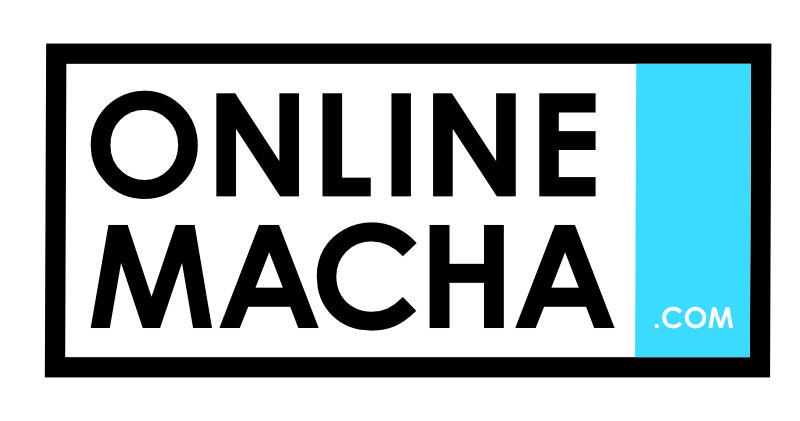Should I pursue an MBA or MIM (aka Master in Management) or a Master in Information Management after my undergraduate degree and a few years of experience? This is a question that millions of students struggle with especially if they did their undergraduate in commerce, arts, and business. This is not a standardized, easy answer to this question and there is no right or wrong answer. It all depends on your interest, budget, opportunities, and background.
Making Career Choices
We’ve all found ourselves in positions where we have to make choices in our academic life which impacts and gives a direction to our careers. Choosing a stream after class 10th was our first encounter with making these decisions followed by choosing a course, degree, or diploma after 12th.
Also, this is more common in many countries such as the UK, India, China than in countries like the USA, Canada, and Australia where students have more flexibility in pursuing their study stream in the undergraduate program.
Planning Helps
Individuals who have planned their actions in advance or have a possible blueprint of what their academic life will look like escape the trouble of making these decisions, well at least that’s what we all think but that isn’t true. Everyone is familiar with the pace at which the world is changing, the emergence of new sectors and jobs has led to the formation of courses or programs to meet the current needs.
There is a possibility that the job you would be doing in the future hasn’t been invented. The overall point is, being well researched about the industry and academics and having good decision-making skills can help you make career-related decisions in a good manner.
MiM or MBA – How to Choose the Right Business Program?
While the world is so full of uncertainty, the world of business is a place with boundless opportunities that can be taken advantage of by having a plan.
People in this industry have plans for decades in the future, you are most likely to have a successful and stable career given you are hardworking and enjoy what you do. You also do not have to stick with one job, one role, and can move around different opportunities in your career.
You can start as a generalist or a specialist (engineer, sciences, sales) but can move across different teams and leadership roles as you develop, learn and grow.
One gateway to venture into the business side of the corporate world that we are all aware of is an MBA program, and most of us think it is the only one.

MiM as an MBA alternative
It has been more than a decade now since the introduction of another program ie. Masters in Management (MIM). Although it is not as popular as an MBA, it has its merits and provides great value.
The last few years have seen a growing interest in individuals considering this program as an alternative to an MBA. Having to choose the right course has caused a dilemma among students, it’s tough to make a choice, and that’s exactly what we are here to help with.
In this blog, we are going to understand similarities and differences in the MBA and MIM programs. To understand which one is better let’s map out definitions for each of them.
MiM vs MBA: An Overview by Piyush Ranjan [as Quoted on Business Because]
I often refer to Master’s in Management programs as the “younger brother” of MBA programs.
MiM programs are usually targeted at candidates who have just graduated or have little to no full-time work experience.
With average class experiences ranging from zero to two years, MiM programs target applicants who wish to learn in detail about various business disciplines, or even switch their career from a different field (for example, engineering or trading) to more management-oriented fields, but do not want to wait for a number of years before doing so.
MBA programs have traditionally targeted professionals looking to gain a broader understanding of business fundamentals after gaining a few years of full-time work experience after their undergraduate degree.
Most top MBA students have an average work experience of four to six years.
MiM vs MBA: Similarities and Differences
MBA degrees are both focused on providing a holistic understanding of how businesses run, covering various areas such as operations, finance, strategy, and marketing, and even providing further opportunities for specializations in specific areas.
Over the two years in a traditional MBA or MIM, candidates often spend the first-year learning about all areas of businesses through various core courses and optimize their second year by focusing on their areas of interest through electives.
While the learning opportunities are similar for both degrees, the major difference arises in their pedagogy.
MiM vs MBA: Major Differentiator
The next major difference is cost.
MBA programs are almost infamous for their high costs. A top program in the US can easily cost the candidate $80-100,000 every year, not a cheap sum by any stretch of the imagination.
MiM programs, by virtue of their target audience, are much more pocket-friendly. INSEAD, one of the best business schools in the world, launched its MiM program in August 2020, and is the costliest MiM program on the European continent, at a sum of €50,000.
MiM vs MBA: Career Prospects
MBA programs have been the apple of the eye of recruiters for years, and that’s unlikely to change even with the pandemic raging on. The salary figures commanded by graduates from the top programs easily reach $140-200,000.
MiM graduates do not command such high salaries. But it would be unfair to expect them to.
With most candidates having hardly a year or two of experience, MIM candidates usually find positions in entry-level management roles, which offer more modest compensation figures.
However, one amazing aspect of the MiM programs is their immense flexibility. Some of the top programs, such as the HEC Paris MiM or the Essec Business School, offer long semester breaks for their students to explore the corporate world before graduating.
This allows students to do multiple internships and at the same time gives them a lot of choices to choose from, while affording them the time to assimilate well into society.
When should You Choose an MBA?
The Master of Business Administration program is a popular program for higher education pursued by professionals seeking the knowledge of business and cooperative workings to become better management professionals.
Target Audience of MBA Programs
MBA is deliberately directed towards professionals with a few years (2-5) of work experience. Professionals with an understanding and experience of a work environment find a chance to apply their knowledge in this program. Acting as a catalyst in the career journey or changing the career trajectory itself is what an MBA program is supposed to help with.
MBA Duration
Most business schools follow the traditional full-time two-year program; other options such as full-time MBA (18 months), executive MBA (20 months) & part-time MBA (26 months) are also available.
Learning Objectives
These programs focus on helping students learn about various disciplines such as finance, accounting, marketing, technology, operations, general management, economics, leadership in the first year of the degree and have students select more electives in the second year to build depth in one or the other disciplines based on their interests and job aspirations.
When an MBA is Not Worth it?
Another guidance for students is to only pursue MBA if they have the opportunity to do it at one of the top universities. Pursuing an expensive MBA degree after years of work experience (10+) or from a no-name college may not help students upgrade their career opportunities or salaries.
When should do an MiM?
Target Audience of MiM
Aspirants without any work experience, who look forward to introducing themselves to the world of business typically choose this program. MIM focuses on giving you a headstart in your career by providing you with an understanding of business studies.
MiM Duration
It is either a one-year or two-year postgraduate master’s degree. This has recently become a growing option for many students who do not want to get work experience but want to pursue a graduate degree with an understanding of business basics and some elective study. With the cost of pursuing an MBA at the top schools in the US and Europe going through the roof, this is a cheaper and faster option for students.
Try to Choose a Niche while Pursuing MiM
Unlike MBA, MiM will have a shorter shelf-life. So, try to choose a trending specialization. Try to focus on one of the technical areas with a wider set of elective courses in finance, accounting, data analytics, information management, it may help students get placed better post-graduation.
MiM vs MBA ELIGIBILITY
Entrance Exam
Standardized test result scores, the most common being CAT in India and GMAT abroad are the basic entrance requirement for an MBA. Every university or college has separate merits or cut-off marks and weightage to previous academic performance.
Age and Work Experience
MBA professionals are ideally expected to have a work experience of 2-5 years, as the course is designed to include the application of that experience in the coursework. The average age of an MBA student is 27 years.
Scores of exams like CMAT & ATMA are considered by institutes to allow admission into their MIM programs. Foreign institutes accept GMAT scores the same. As the course is designed as a Kickstarter students aren’t necessarily required to have work experience and the typical age of a MIM student is 23 years.
MiM vs MBA CURRICULUM
The course content or syllabus of both the courses is pretty similar, what makes them different is the orientation and methods of delivery and teaching.
MBA is primarily a hands-on experience involving case studies and real-world examples similar or borrowed from the business world. Experimental learning, analytical thinking, and logical analysis are practiced when dealing with business intricacies.
This method allows students to apply their pre-MBA work experience in the classroom curriculum. Accounting, applied statistics, human resources, business communication, business ethics, business law, business strategy, finance, managerial economics are some of the subjects in an MBA.
MIM is mainly based on a theory involving students in strategic discussions, role play & case studies. These activities help students prepare themselves to face real-world business problems. By the end of MIM students are required to undertake an internship to practice their learning in the program. Finance, Marketing, Human Resource Management, Corporate, and Business Strategy & Business Analytics are some of the subjects in MIM
MiM vs MBA COST
A huge differentiating factor between both these courses is the cost of education. You might be very aware that an MBA from a reputed college cost close to $150,000 abroad or ₹25,00,000 in India. While the top MBA programs worldwide range from $75,000 to $130,000 per year.
Comparatively, MIM is on a more affordable side, nowhere near cheap. Here’s something interesting: the most expensive MIM program is half the cost of an MBA program.
MiM vs MBA Salary and Job opportunities


An MBA degree can place you in mid or higher-level positions, as most MBA students have prior work experience. This makes candidates expect and employers offer higher salaries. Most recruiters are connected with top universities and recruit candidates through campus placements.
MBA graduates are paid heftily by these companies and many consulting and investment banking companies may cover the cost of tuition for the second year for these students in terms of reimbursements or sign-on bonuses.
Job opportunities apart from college placements are very rewarding, having an MBA degree from a reputed college can really make a candidate stand out. The salary of an MBA graduate ranges from top global business schools would be $100,000-$200,000.
While MBA is comparatively better rewarding doesn’t imply that MIM is any less. An important point to note here is that as MIM graduates usually don’t have any prior work experience they are generally offered entry-level jobs, therefore MiM programs are cheaper. More than 90% of recent MiM graduates got a job in the first three months. The weighted annual starting salaries of students from the world’s top ten institutes ranged between $67,000 and $96,000.
Time to Get Placed
In Europe, MiM graduates have found jobs faster than their MBA counterparts. We believe it is due to the salary expectations. Secondly, there are more business schools that offer MiM programs in Europe.

MiM vs MBA: Preferred Destinations
MiM is more of a European concept; while MBA has been an American product.
MiM vs MBA in USA & Canada
A large proportion of two-year, full-time MBA candidates (66%), target the US for their degree, with 11% focusing on Canada. That’s likely because of the renowned strength of the program in the US, where the MBA was born, launched by Harvard Business School at the beginning of the 20th century.
The master in management degree is most popular in Europe, and European business schools dominate the Financial Times Masters in Management ranking.
MiM vs MBA in UK / Europe
In GMAC’s survey, 25% of MiM candidates list the UK as their preferred destination; 23% target France; 10% Germany; and 6% the Netherlands. Only 10% of MiM candidates say the US is their preferred destination.
Some European programs allow students to study on multiple campuses across Europe. The European Triple Degree Master in Management at EMLYON Business School takes students to France, the UK, and Germany.
Can I do MBA after MIM?
This is a question many students have on their minds and the answer is yes. Getting the theoretical knowledge in a MIM program, implementing it, and gaining a work experience of 3-5 years, and then planning to do an MBA is a very sensible choice.
Although you do not necessarily need to do a 2 year full-time MBA as your professional years are of high value doing a 1 year MBA can serve your purpose saving you an extra year.







